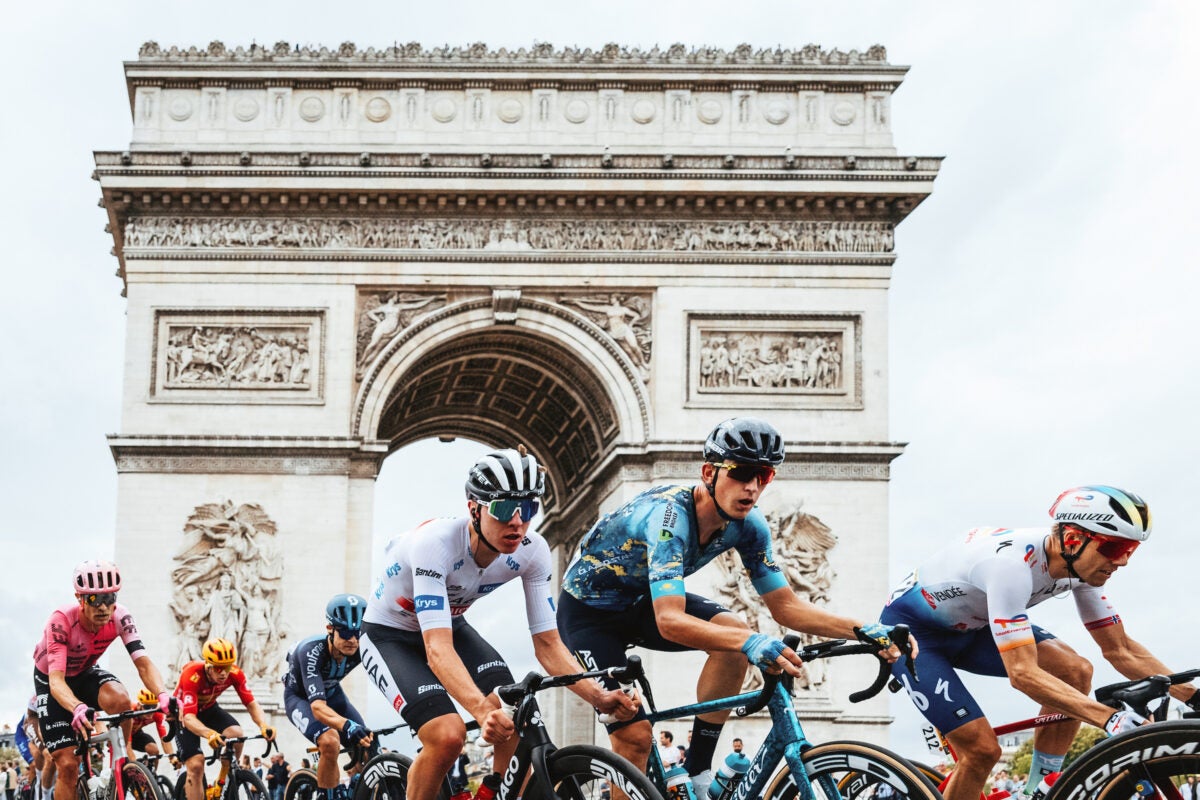“], “filter”: { “nextExceptions”: “img, blockquote, div”, “nextContainsExceptions”: “img, blockquote, a.btn, a.o-button”} }”>
Pro cyclists are the masters of breaking things down.
Just go for a ride with one, and you’ll hear them say something like, “We only have to get over this climb, then there’s a bit of flat, and then we’re basically home.” That climb could be HC categorie, and “basically home”—at least if you’re living in Andorra, like seemingly half the pro peloton—is usually 10–15 km at 7 percent.
When I start a grand tour, I don’t think in terms of 21 stages remaining.
Until this year, I would typically say, “We basically have nine stages, but on stage 5 it’s a time trial, so it’s really four and four until the first rest day. Then there’s a six-stage block with another time trial, followed by a five-day race, and a final cruise into Paris.”
However, this year’s Tour de France is different. Instead of a leisurely parade with just an hour of racing at the end, we’re—after five consecutive days of the most demanding racing I’ve ever experienced—doing one more proper stage.
A grusome third week
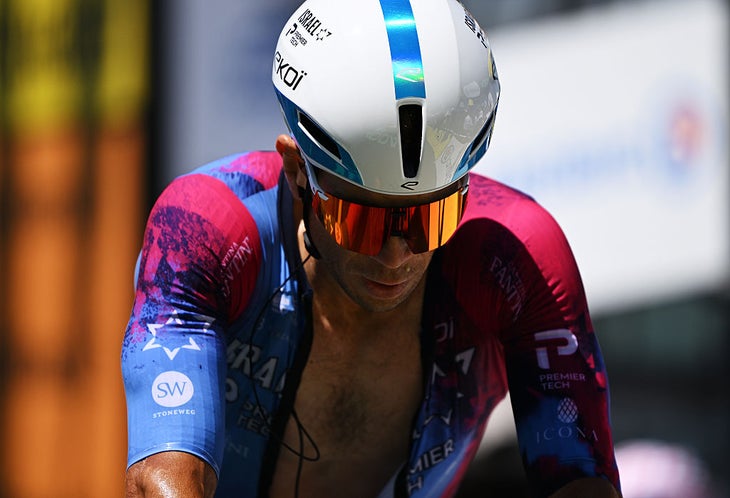 Boivin has been made to suffer to get to Paris. (Photo: Tim de Waele/Getty Images)
Boivin has been made to suffer to get to Paris. (Photo: Tim de Waele/Getty Images)
This past week has been unforgiving, particularly for the boys on Israel Premier Tech.
On stage 17, we rode what was our best team race, only for it all to go to waste as our star sprinter, Jake Stewart, and his leadout man, Guillaume Boivin, got caught in a crash and hit the deck inside the final kilometer.
We were all lost for words as we sat on the bus post-stage, and the repercussions of the crash would result in Guillaume, a pro of over 15 years, having the worst day he has ever had on the bike the following stage. “My second worst day wasn’t half as bad as this one,” he told me post-race.
I believed him. He was in tears at the top of Col de la Loze, and had I gone through what he had, I would have been too. After crashing the day before, G’s hand was stitched up and his body was a mess.
On stage 18, the queen stage of the race, with the peloton racing at full speed, he was dropped early and faced a daunting 5,500 meters of climbing alone.
He did make it to the gruppetto, but due to a weakened hand, he lost control of his bike and crashed hard on the same hand on the technical descent from the Madeleine. He then had a puncture while chasing back and had to expend every last vestige of energy to make it within a relatively harsh time cut.
Due to the time cut percentages, had Ben O’Connor ridden two seconds slower that day, G would have had four more minutes of a cushion, but at one point, after 18 stages, being cut from the race was a real possibility.
Things were so close that, as hail and cold-rain beat down on him, Krists Neilands, our Latvian veteran on the team, courageously dropped into the abyss behind the gruppetto and risked his own race to pace Guillaume inside the 48-minute time limit.
Things haven’t gone our way.
The days I have been good, luck wasn’t on my side, and the days I had a real opportunity to win, I haven’t been good. It’s been frustrating, and I think a lack of racing this season—due to injuries and illness—was the biggest culprit for my underperformance. On the plus side, for the first time in my career, I have made it to Paris without injury or illness, and I am ending this Tour better than where I started.
Being my 39th trip around the sun, where I am now gives me optimism for what remains of my career.
Montmartre memories
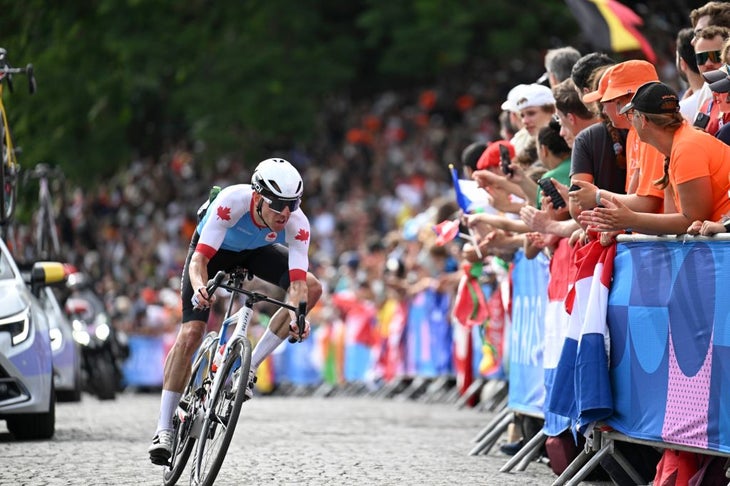 Woods experienced the full madness of Montmartre at the 2024 Games. (Photo: Hu Huhu/Xinhua via Getty Images)
Woods experienced the full madness of Montmartre at the 2024 Games. (Photo: Hu Huhu/Xinhua via Getty Images)
Fortunately, we have one last shot today, with Jake Stewart, on what is the crown jewel of sprint stages—the Champs-Élysées. But, like I mentioned above, this year’s race around Paris won’t be a cake-walk.
In 2024, two days before the Paris Olympic road race, I did what must have been the most surreal race recons—actually surreal rides in general—of my life. The race organizers managed to carry out a rolling closure of the roads so that the riders could see the final circuit.
This was no easy feat, as the course went through the heart of Paris and passed some of its most iconic sites.
Along with most of the best male and female cyclists in the world, I cruised through Paris as thousands of people cheered and yelled at us as if we were racing.
Since the games had already begun, the streets were packed, and a full peloton of 180 male and female riders, adorned in their nations’ colors, cruised past. An excitement and interest seemed to build and reverberate around us. The energy was incredible, and I realized then, that if it was already like this for a recon, the actual race was going to be insane.
When I got back to our race hotel, I told my teammate, Derek Gee, “Whoever is in the break, the first time going up Montmartre, is going to feel like a god.” Two days later, I did just that. I got in the break and was on the front of the race as we first climbed Montmartre.
For a very brief moment, I did feel like a god. I have never been subjected to that level of noise or that level of energy from fans in my life. It was so loud I couldn’t even think.
So, when ASO announced that this year’s final stage of the Tour would not follow its traditional route but instead involve a circuit going up Montmartre, I felt both excitement and frustration.
Pleading for a procession into Paris
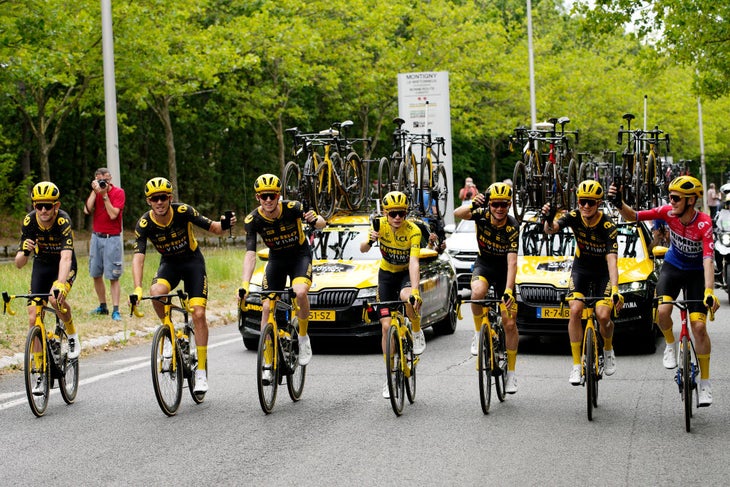 The last ‘traditional’ Paris stage was in 2023. Last year the Tour finished up in Nice. (Photo: Daniel Cole – Pool/Getty Images)
The last ‘traditional’ Paris stage was in 2023. Last year the Tour finished up in Nice. (Photo: Daniel Cole – Pool/Getty Images)
As a cycling fan, I’ve never been a fan of the procession that is stage 21.
It always felt anti-climactic. Often, while watching, I would wonder why, instead of riding complacently behind the guy sipping champagne, GC riders never tried one last “Hail Mary” on this final stage.
It felt too ceremonial and even gave me a sense that pro cycling had a touch of professional wrestling. However, now, as a pro cyclist, my only wish is that the stage was easier.
The Champs Élysées is a massive shock to the system.
After flogging yourself for twenty days and optimizing every aspect of your daily routine, you suddenly have to abandon all semblance of a performance mentality and smash yourself over the cobbles in the wake of the best sprinters in the world.
The stage 20 grande casino
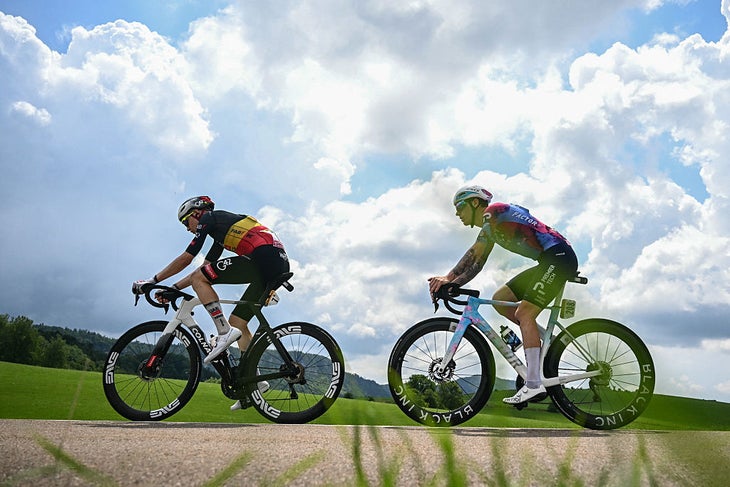 Long transfers and a late start to stage 21 scramble the typical post-stage routine after stage 20. (Photo: LOIC VENANCE/AFP via Getty Images)
Long transfers and a late start to stage 21 scramble the typical post-stage routine after stage 20. (Photo: LOIC VENANCE/AFP via Getty Images)
The hours between finishing stage 20 and starting stage 21 are, as the Italians say, “un grande casino.” In other words, a brothel. Logistically, getting from the penultimate stage to Paris is a nightmare, often involving buses, planes, and scrambling to sort-out in which bag to put your passport and race kit.
Surprisingly, this year has been relatively tame, with only a three-hour bus transfer to stage 20, a 180 km race, a three-hour transfer to a hotel after, and then a final 200km transfer to Paris in the morning.
After all this moving around, you end up eating dinner way later and the meal is something that bears no resemblance to the rice and pasta you’ve been eating for the past three weeks.
Olga, the team chef I’ve had for every Tour that I have done, always makes incredible burgers, fries, and even guacamole and nachos. You wash this meal down with a pint or two. Then you spend the next seven hours trying to sleep as your guts twist and churn, trying to figure out what the hell you’ve just given them.
Not only is your sleep disrupted by the wildly irregular meal, but you’re simply excited to be done. Thoughts of your impending vacation, and time with your wife and kids bash around your brain like a group of six-year-olds in a bouncy castle.
You then wake up at 7:00 a.m. for an unreasonably long transfer, and by the time you’re at the start of the race, in the team bus at 3:00 p.m., you feel anything but ready to engage in one of the most important sprints of the cycling calendar.
This, I now understand, is why those guys I used to watch on TV don’t attack.
By stage 21, most of the peloton—aside from the poor sprinters who spent the last week desperately trying to stay within the time cut—just want to be done. But, ASO has, as one would expect, decided—in the name of subjecting the riders to more suffering—to make the Champs Élysées finale way more demanding.
The last dance of the monkeys
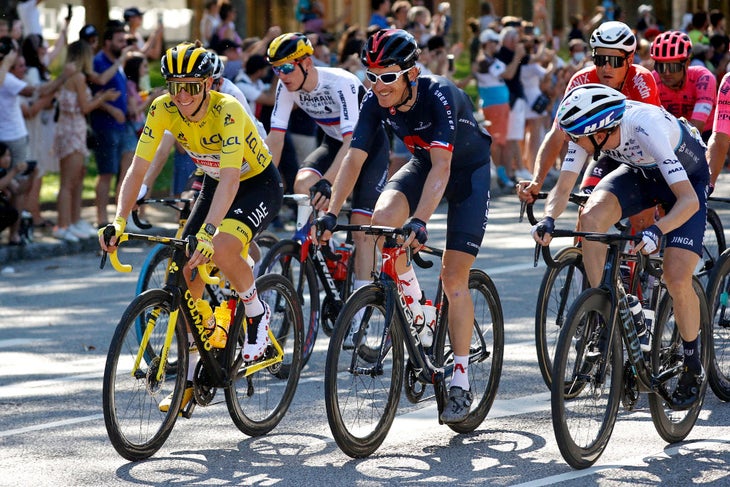 Woods is wishing for the old-school champagne-and-chat stytle Paris final (Photo: Chris Graythen/Getty Images)
Woods is wishing for the old-school champagne-and-chat stytle Paris final (Photo: Chris Graythen/Getty Images)
By adding multiple ascents of Montmartre into the race course, they’ve put the proverbial fox in the henhouse.
Montmartre is not an insignificant climb, and with its narrow width and technical descent, it will most certainly create crashes and perhaps even disrupt the GC. Any rider contending in the general classification, and any sprinter wanting to battle for the final, will have to enter the climb in great position.
Not only will there be splits due to the technical terrain, but gaps will also be created by riders who have no more skin in the game. If you are a climber, like me, who has spent the past three weeks chasing the break, you couldn’t care less how you finish on this stage, and you will inevitably sit up once you’re in a place where you can comfortably make it within the time cut.
If you are a sprinter or GC rider with a mechanical, or have some unforeseen issue that puts you behind those riders, you will likely never see the front of the race again. This will cause stress and, in bike racing, stress always leads to crashes.
So, if you are watching this year’s final of the Tour de France, prepare to be enthralled, but also say a prayer for the monkeys that have to dance for yet another day.
